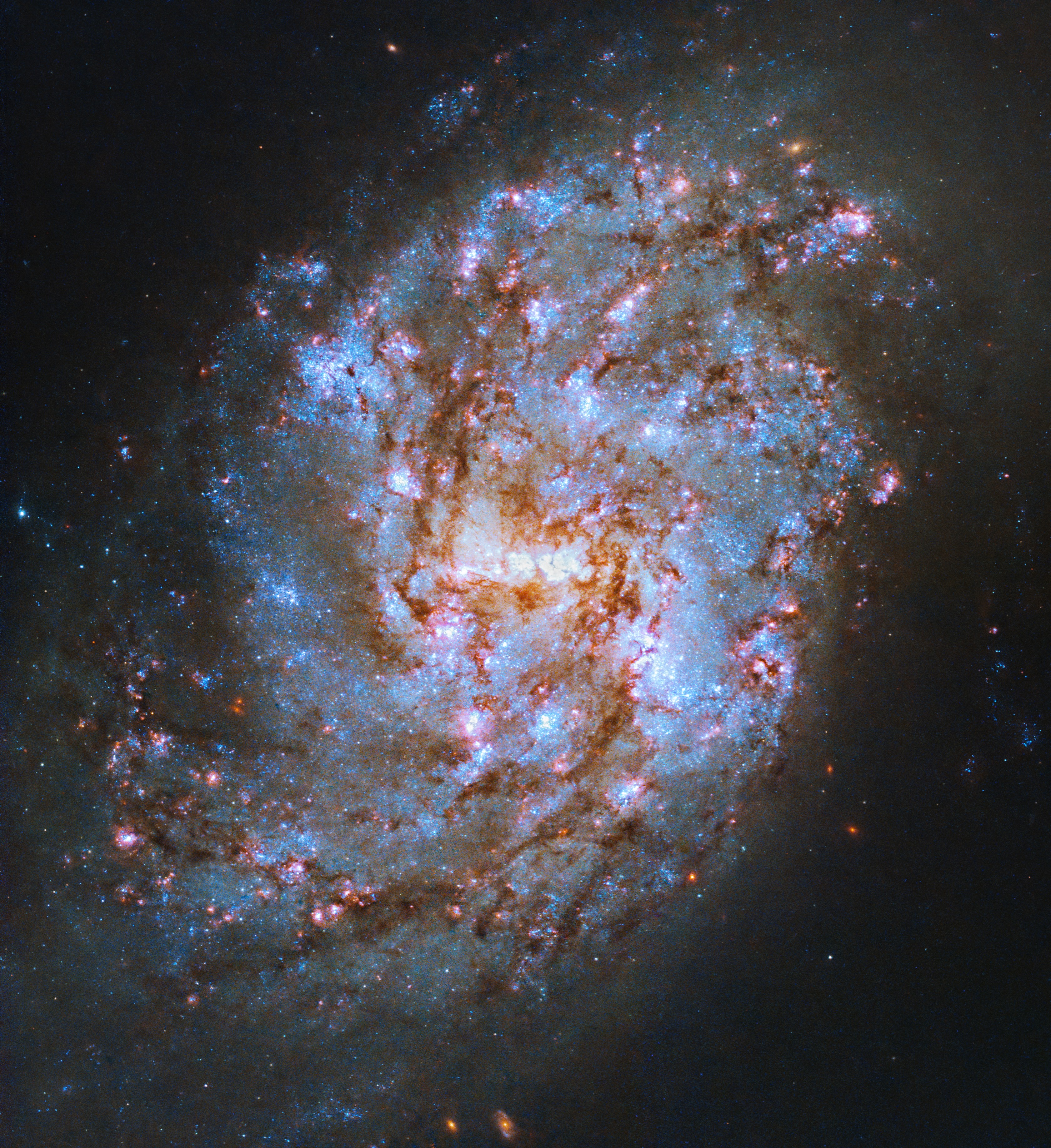Science
Related: About this forumHubble's Galaxy Week -- October 2 to October 7
NASA has published a new Hubble Space Telescope galaxy photo every day this week.

British astronomer William Herschel discovered NGC 1087 in 1785. The galaxy sits just south of the celestial equator, making it visible from both hemispheres. In 1995, astronomers discovered a Type II supernova within this galaxy. Type II supernovae occur when a massive star uses all of its nuclear fuel and its iron core collapses, then explodes. Named 1995V, it is the only supernova ever seen in this galaxy.
In this new ultraviolet, visible, and near-infrared light image from NASA’s Hubble Space Telescope, the dark red streaks are cold molecular gas, the raw material from which stars form. The spots of bright pink signal areas where new stars are forming, characterized by the presence of ionized hydrogen, oxygen, and sulfur. The bluer regions hold hot, young stars formed earlier in the lifetime of this galaxy. Hubble observed NGC 1087 to study the connection between young stars and cold gas, and especially to determine what happens to gaseous regions after stars are formed within them.
https://science.nasa.gov/missions/hubble/hubble-captures-starry-cetus-constellation-galaxy/
Deuxcents
(19,757 posts)It was discovered in 1785..what type of equipment was used, I wonder. I realize it wasn’t this spectacular to the eye back then but, 80 million light years away and it could be discovered that long ago. It is just fantastic to see it today with all our equipment and in all its beauty.
lastlib
(24,923 posts)it has to be emitting a fantastic amount of light energy! It boggles my mind how HST can show it to us in such clarity and help us to reveal its many secrets, and to appreciate its stunning beauty.
Our universe is an amazing place!
![]()
Deuxcents
(19,757 posts)I’m awe struck at what we get to see and it’s just a photo…I can’t imagine the excitement these scientists have studying these as they are revealed.